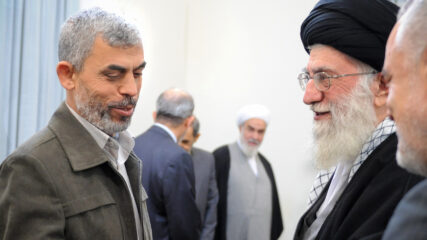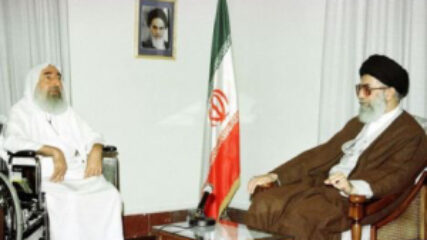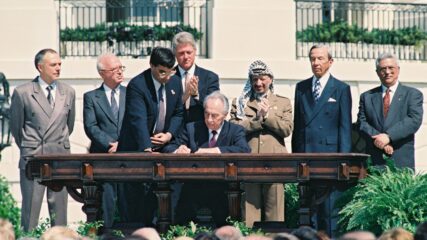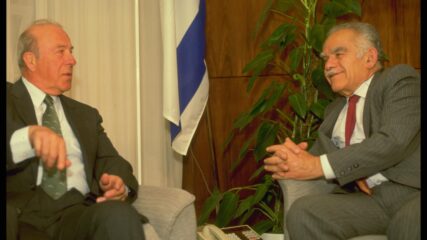Explainer: A Short History of Hamas
Ken Stein In the 1988 Hamas Charter and from remarks by it leaders and in other publications, they express hatred of Zionism, Israel and Jews. It is unmistakably clear that Hamas abhors Zionism, Israel and…

Ken Stein In the 1988 Hamas Charter and from remarks by it leaders and in other publications, they express hatred of Zionism, Israel and Jews. It is unmistakably clear that Hamas abhors Zionism, Israel and…

Former US President Jimmy Carter embraced Hamas as a legitimate voice of the Palestinian people. His motivations possibly stretched from intentional to misguided to malevolent. Hamas leaders who were engaged in inter-Palestinian struggles remained pleased with the recognition he gave them. American officials and Israelis were keenly perturbed by the courtship he gave them.

“We support the eradication of Israel through armed Jihad and struggle. This is our doctrine. The occupation must be swept [away] from all our land.” May 26, 2021, speech on Al Jazeera, https://www.memri.org/tv/hamas-leader-gaza-yahya-sinwar-we-have-500-km-of-tunnels-in-gaza “Our complete…

Just as al-Qaeda seeks the total destruction of western democracies, Hamas seeks Israel’s total demise. Since its inception in 1988, Hamas has been crystal clear about its opposition to Zionism and Israel.

As it has in the past Hamas may accept a tahdi’a or calming down of tensions, or even a temporary truce or hudna, negotiated by a third party, but for it to accept Israel as a reality is totally contrary to its ideological outlook.

Hamas has opposed all agreements and cooperation which either the PLO or the Palestinian Authority have signed with Israel. “Hamas will never recognize Israel. This is a red line that cannot be crossed.

Should the United States become centrally or peripherally involved in monitoring a cease-fire and the movement of a cease-fire into a new status-quo for Gaza, the contents of this MOU could constitute a workable outline for helping enforce calm in Gaza and on its borders.

“The Quest for Arab-Israeli Peace: Israel’s Disengagement from the Gaza Strip: Precedents, Motivations and Outcomes” Zionism Fulfilled.- Israel’s preemptive physical disengagement from the Gaza Strip in August 2005 was the result of a national consensus;…

November 1, 1995 Three days before he was assassinated Nov. 4, 1995, Israeli Prime Minister Yitzhak Rabin told his speechwriter Yehuda Avner why he recognized the PLO and Yasser Arafat. That recognition came in the exchange…

In September 2023, thirty years after the historic signing of the Oslo Accords, there is occasion to review Prime Minister Rabin’s understanding of them. I assembled this collection years ago from Daily Reports- Near East and South Asia, 1993-1995. Two short items about Rabin’s views are also found or linked here. Rabin provided a summary of his views of the Accords in a Knesset speech in October 5, 1995. Some of Rabin’s reasons for signing the Accords are also provided in Yehuda Avner’s The Prime Ministers.

Comparing the 1936-39 Arab uprising in various parts of western Palestine and the intifada that began in 1987 in the West Bank, the Gaza Strip and East Jerusalem, the most striking conclusion is the large number of general similarities between these manifestations of Palestinian national consciousness. The two most significant differences, however, are that the 1987 intifada generated a deeper and more prolonged Palestinian national coherence across all classes than did its predecessor and clarified and crystallized Palestinian opinion, which helped create a historic compromise in Palestinian public policy.

Both the intifada that started in December 1987 and the Arab revolt of 1936 to 1939 unexpectedly jolted the political status quo. But unlike its precursor, the intifada unified a physically dispersed and ideologically diverse Palestinian community.

In early 1988, for the second time within eight years, the Reagan Administration reacted to events in the Middle East by proposing that the stalled Arab-Israel negotiating process be reactivated, an effort known as the Shultz Initiative.